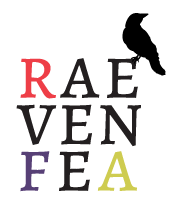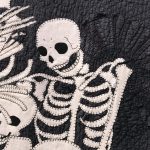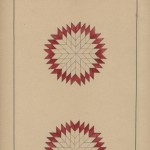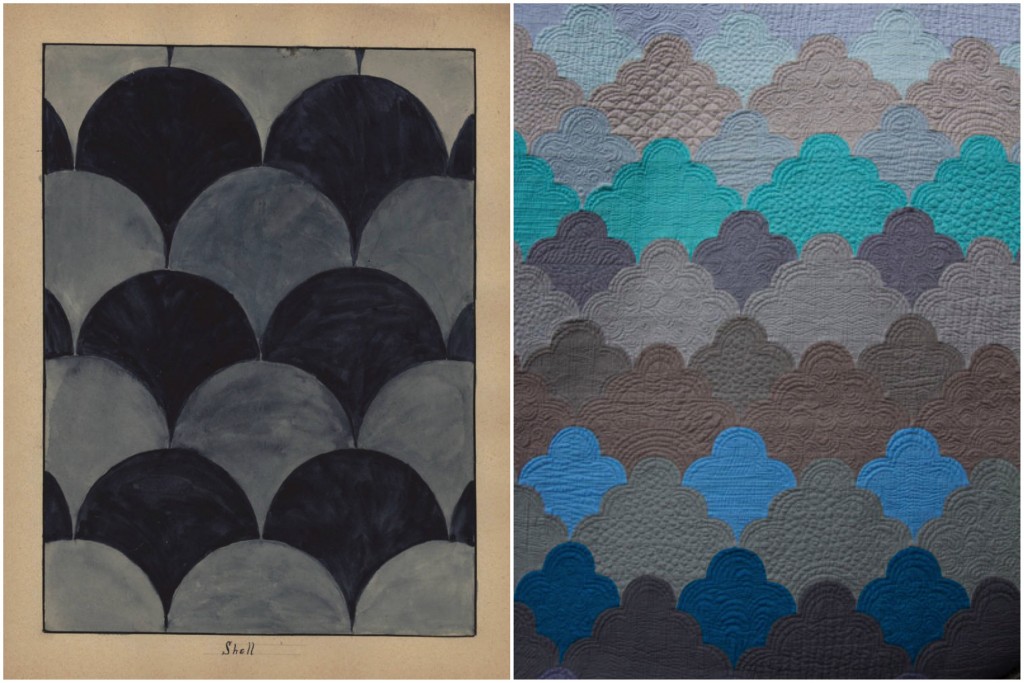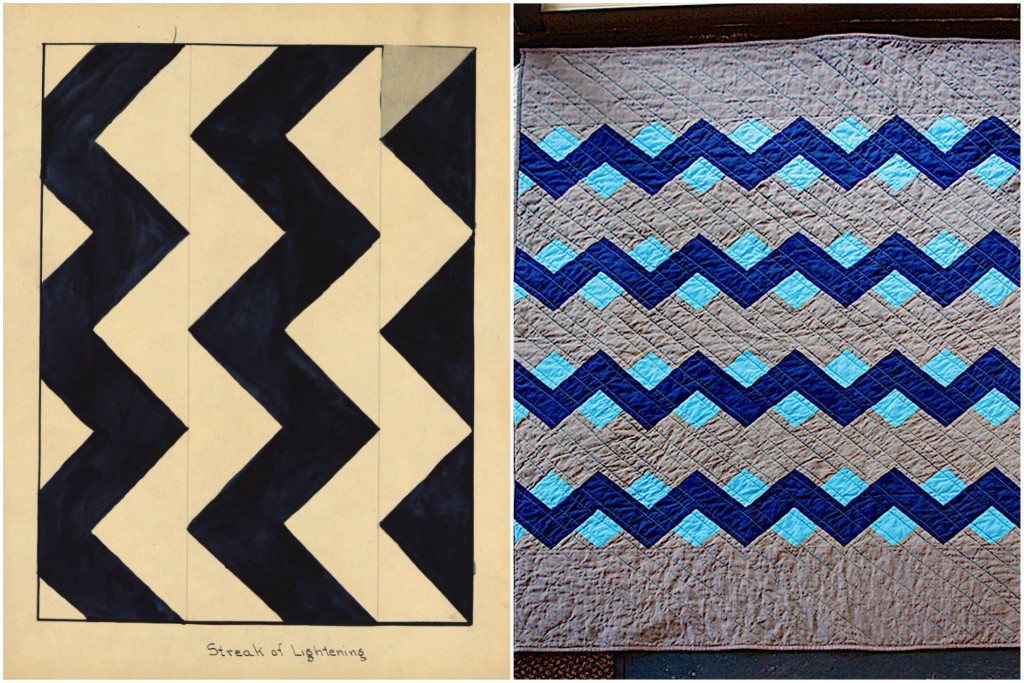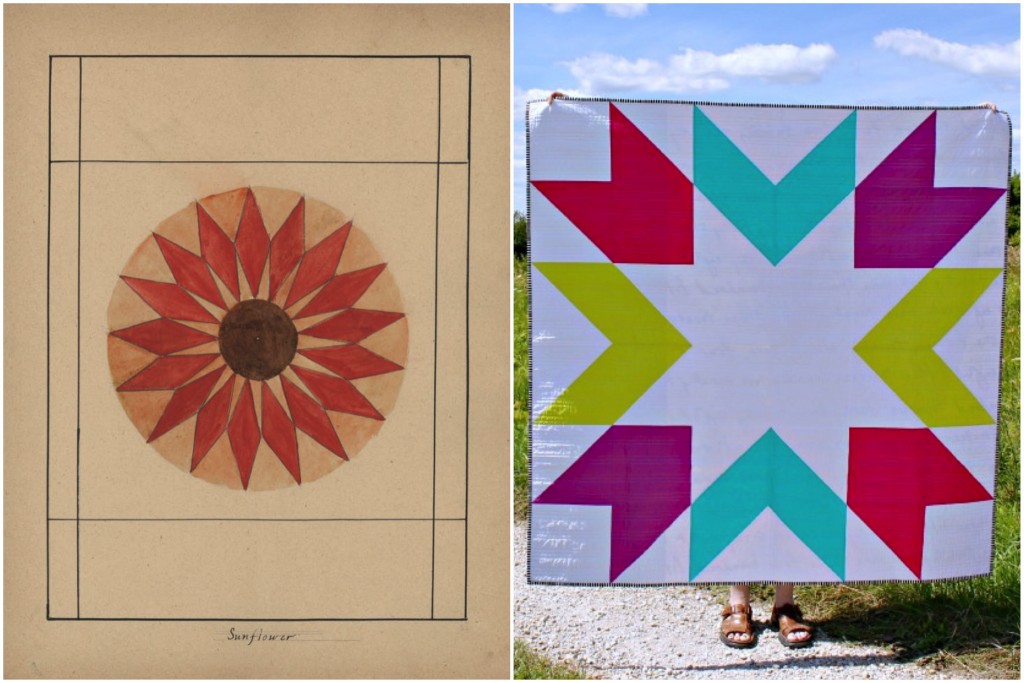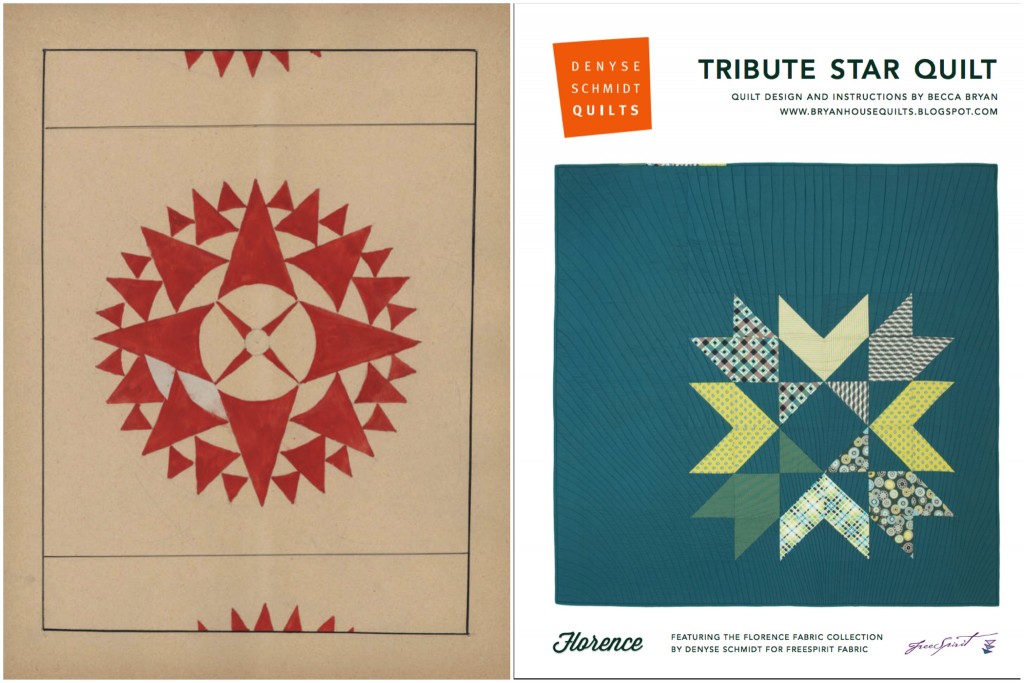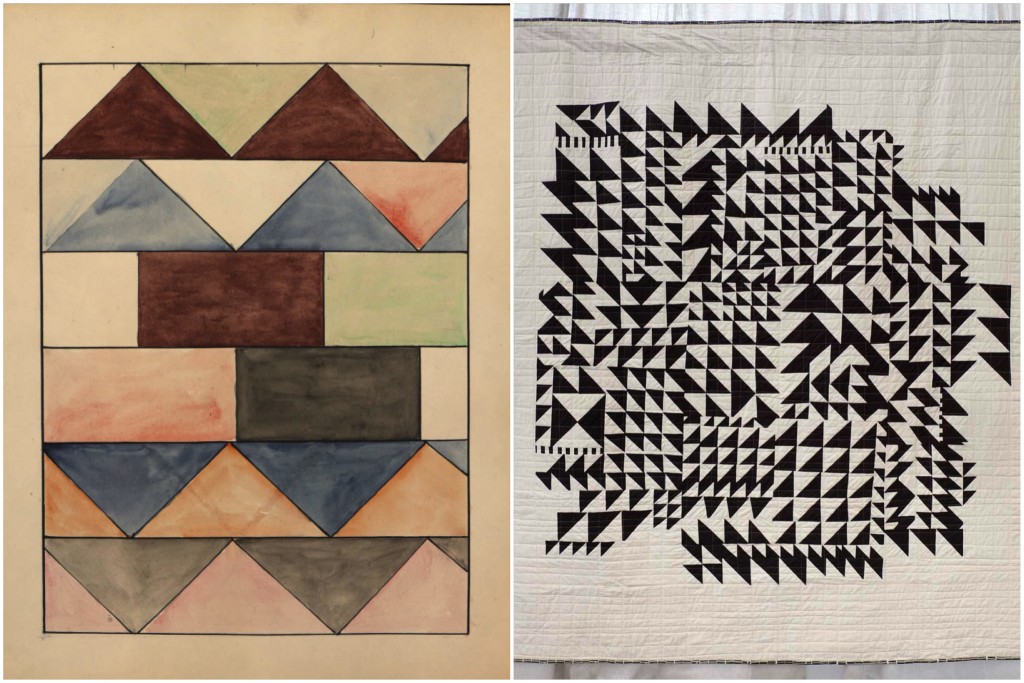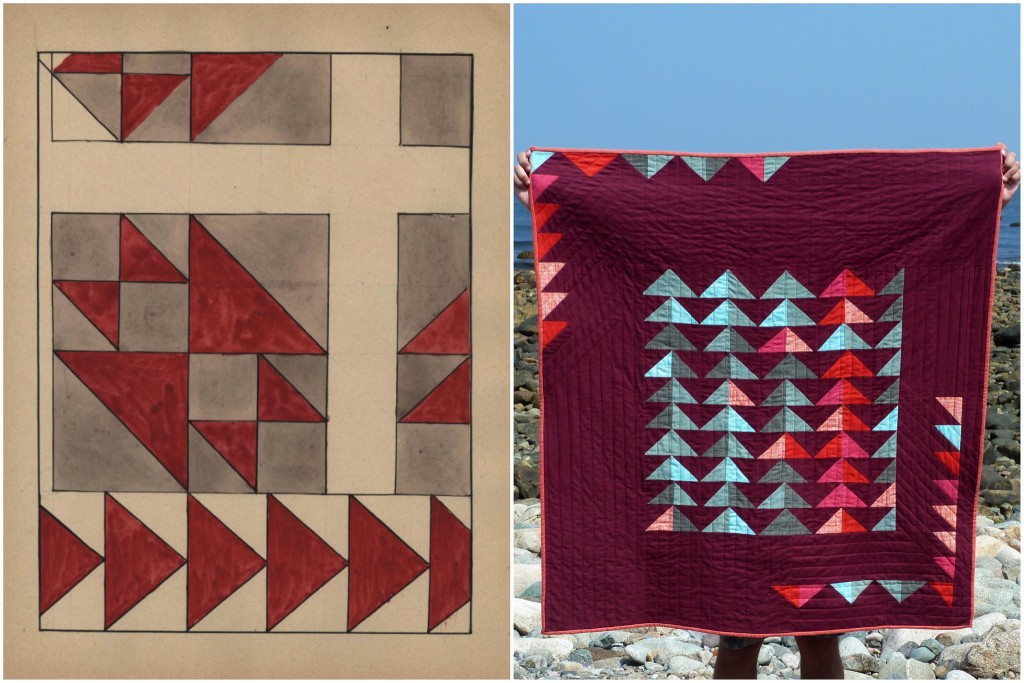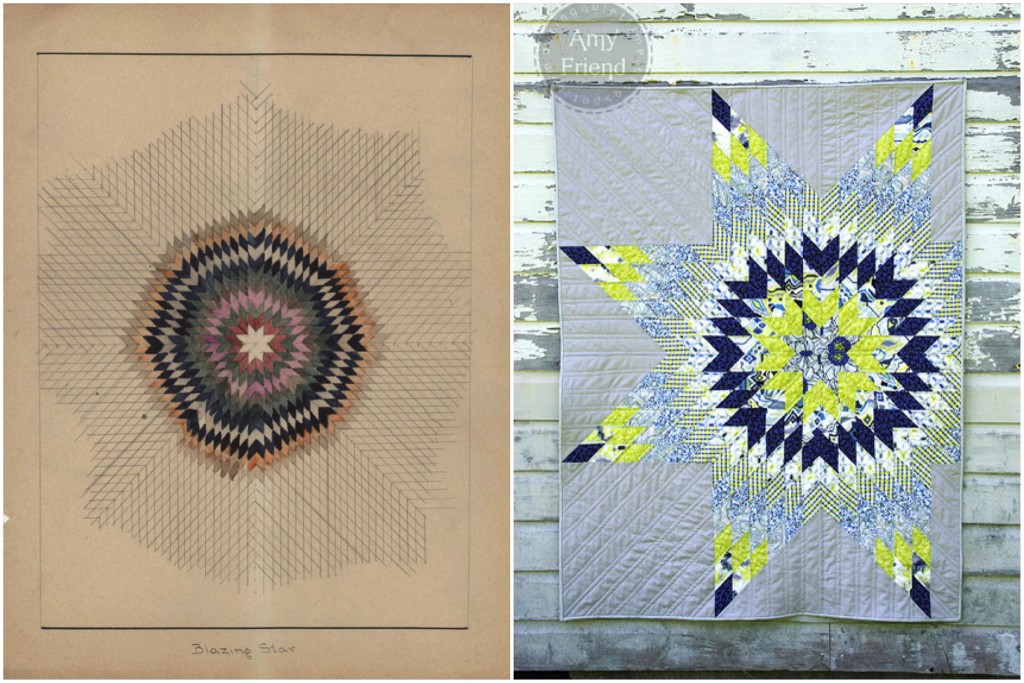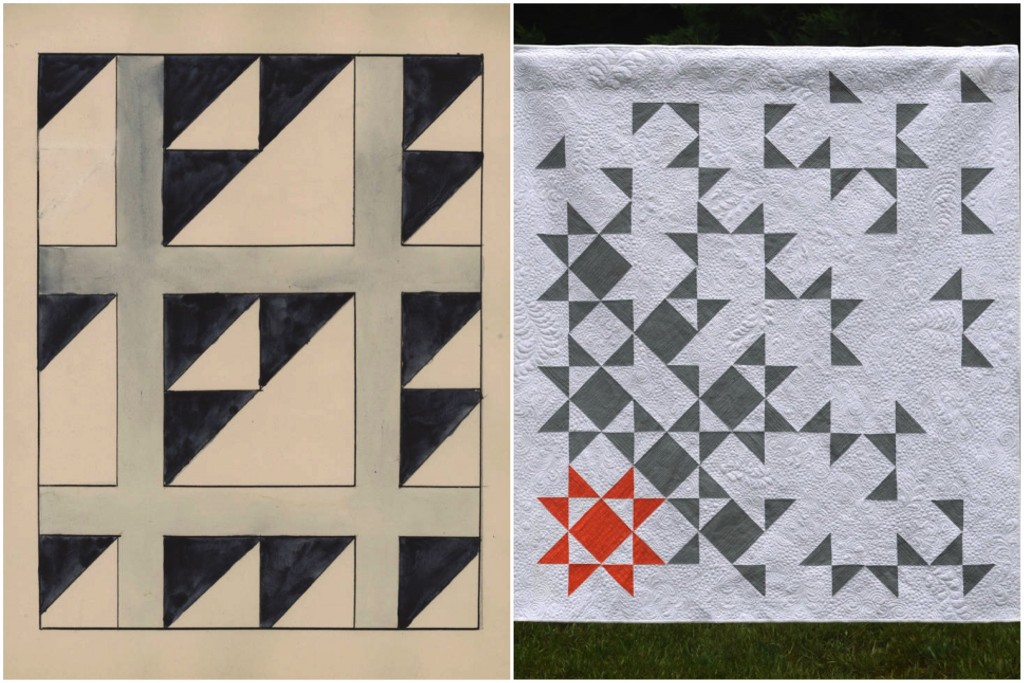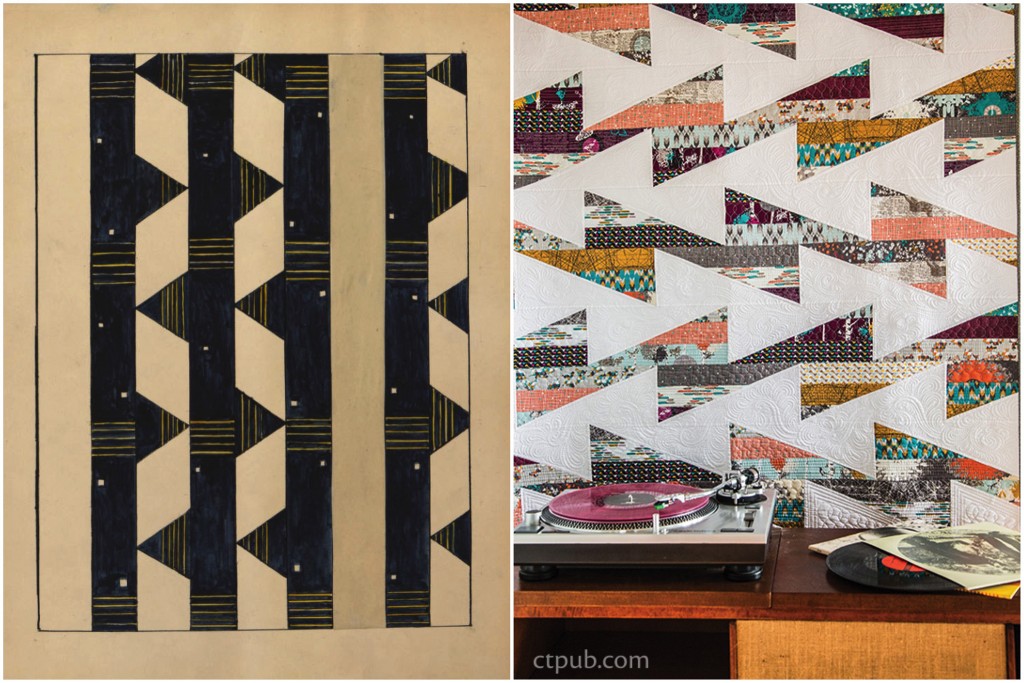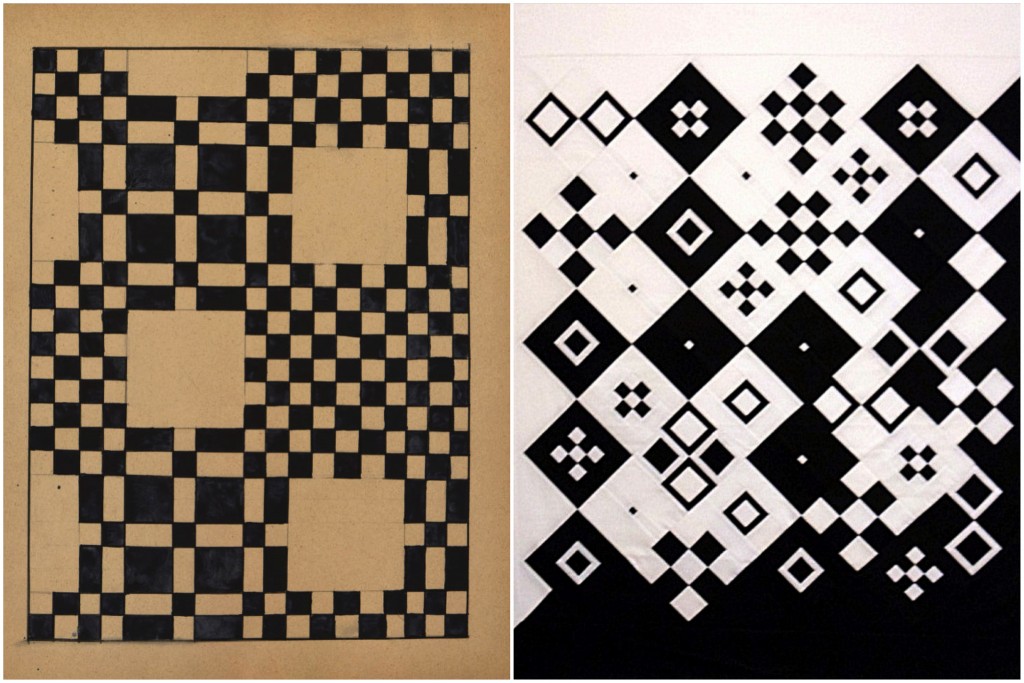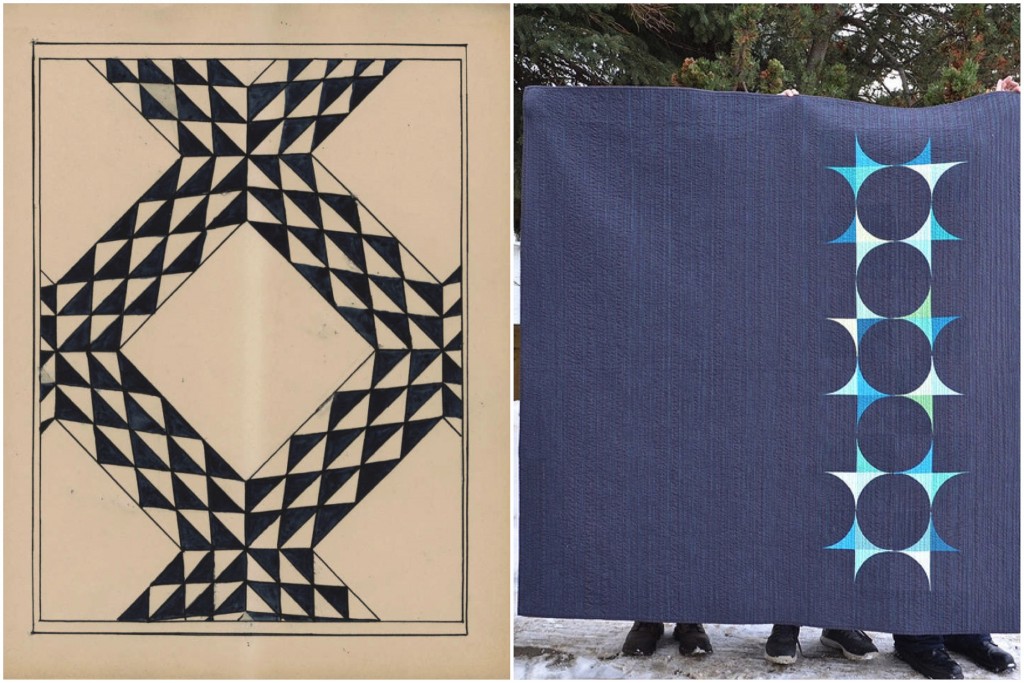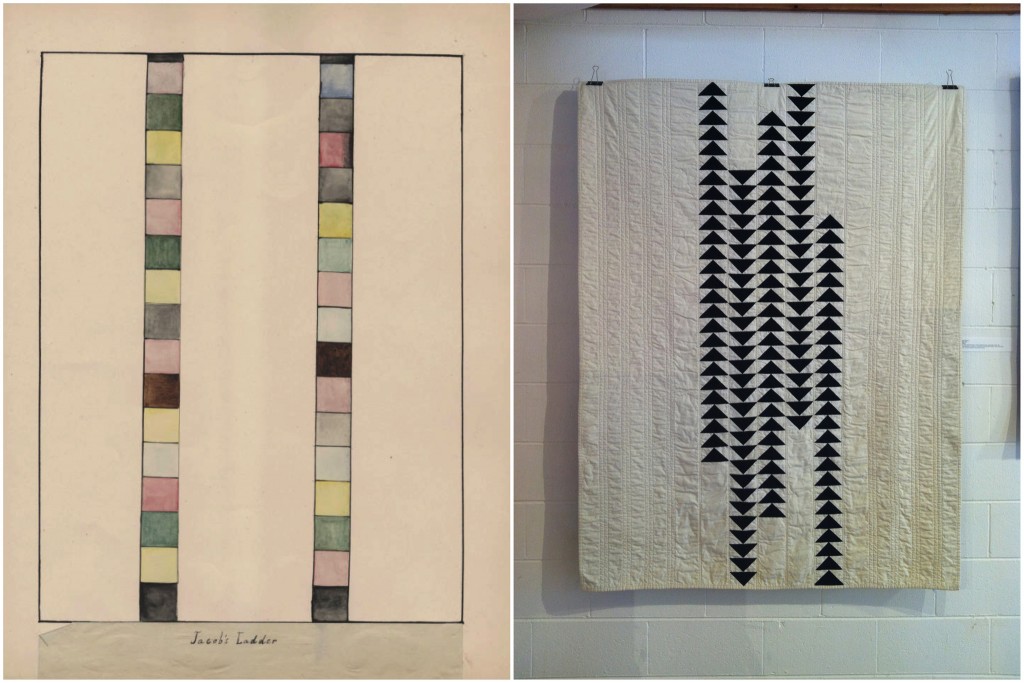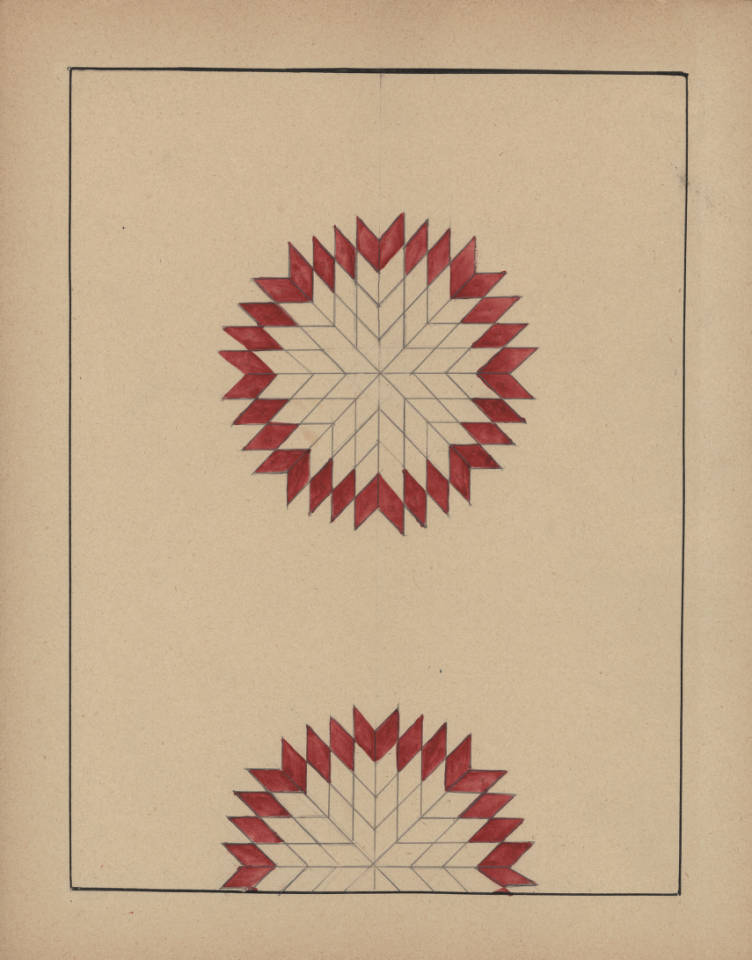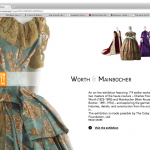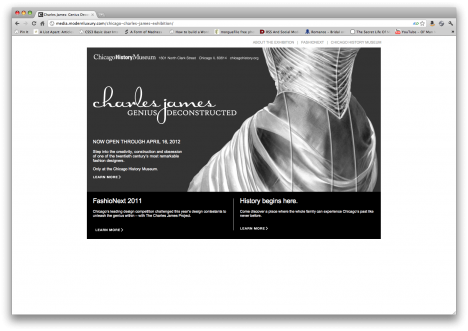Palimpsests and Politics and Preservation
When I dropped off my welcome blanket donation at MODA, I stopped in to see the current exhibit, “Making Change: The Art and Craft of Activism”. I’d heard about the exhibit in a post by Chawne Kimber, as her quilt “The One for Eric G” is in the show—in fact, it’s one of the first artworks you see. It was great to see her work up close (those incredibly consistent hand stitches! that precision piecing! the subtle movement and inclusion of color that just isn’t apparent in an online photo of the full quilt!), but my attention was grabbed by two other quilts in the show, and I kept walking back to them to study in depth.
From afar, the two quilts look incredibly different, but it was their commonalities that captured my attention, and have kept my mind coming back to them even now, a week later. The main commonality between the two is their use of antique quilts as a base for appliqué. And while they both had a message about war, destruction, and death, it wasn’t their political message that caused a visceral reaction for me. That reaction was caused by the potential destruction to the original quilts.
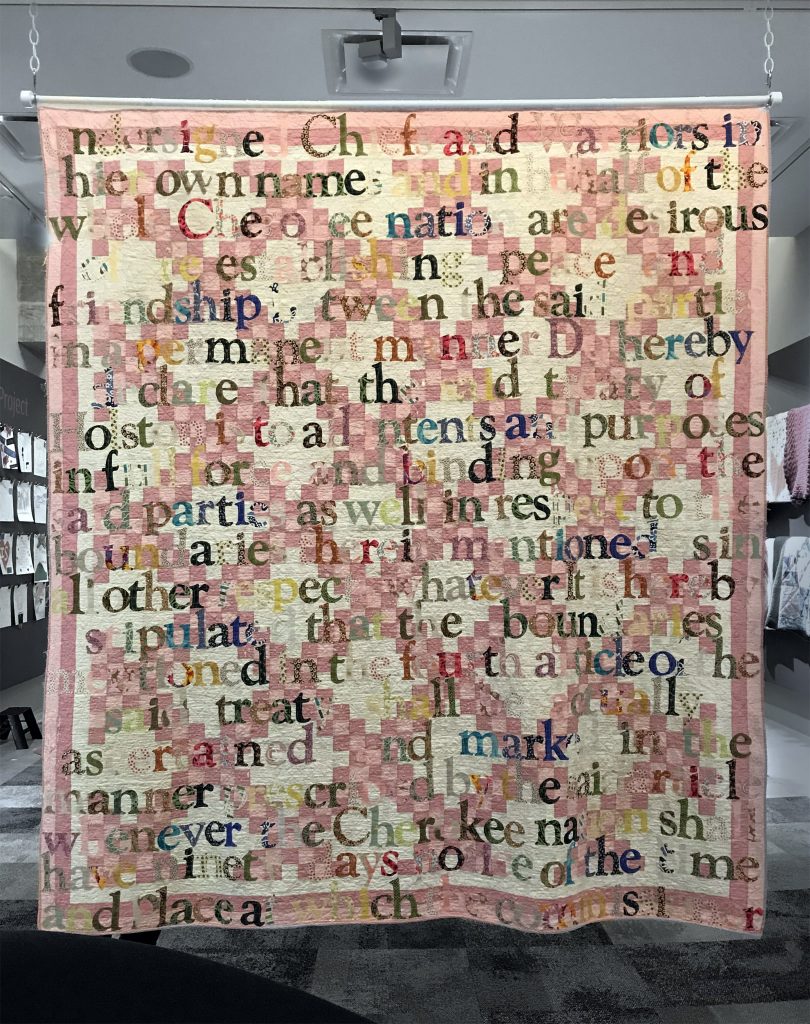
First was “Treaty With the Cherokee 1794” by Gina Adams, which is double-sided. I saw the front of the piece first, which is the back of the original quilt, so it wasn’t immediately obvious what the base medium was. In this artwork, the artist has appliquéd the words of a treaty onto an Irish Chain quilt with a solid backing fabric. On the spectrum of destroying the original quilt, this one is somewhat minimal. I don’t know whether Adams used an adhesive on her letters, but in theory, the stitching and appliqué pieces could be removed and the quilt would be returned to its unaltered format. If anything, the stitching might even have stabilized the quilt, as you can see a few places where there are holes through all the layers. My mind plays more with the “what ifs” on this on. What if Adams had used a quilt that was actually contemporary to the treaty instead of one that likely dates to the 1860s at the earliest (there are far fewer extant quilts from the 18th century)? What if she had used a quilt that was a less common pattern than an Irish Chain, used a pattern without as much representation in various antique collections? Would those cause more of a reaction on my part, making me mourn the loss of the original quilt? On the flip side, I think the piece would be even more impactful if Adams had used a quilt that was more befitting the style and tastes of 18th century than a design so timeless that it could have been made any time from the early-mid 19th century to now. What if she was able to use something more closely resembling a blanket that could have been traded between the parties involved in the treaty negotiations?
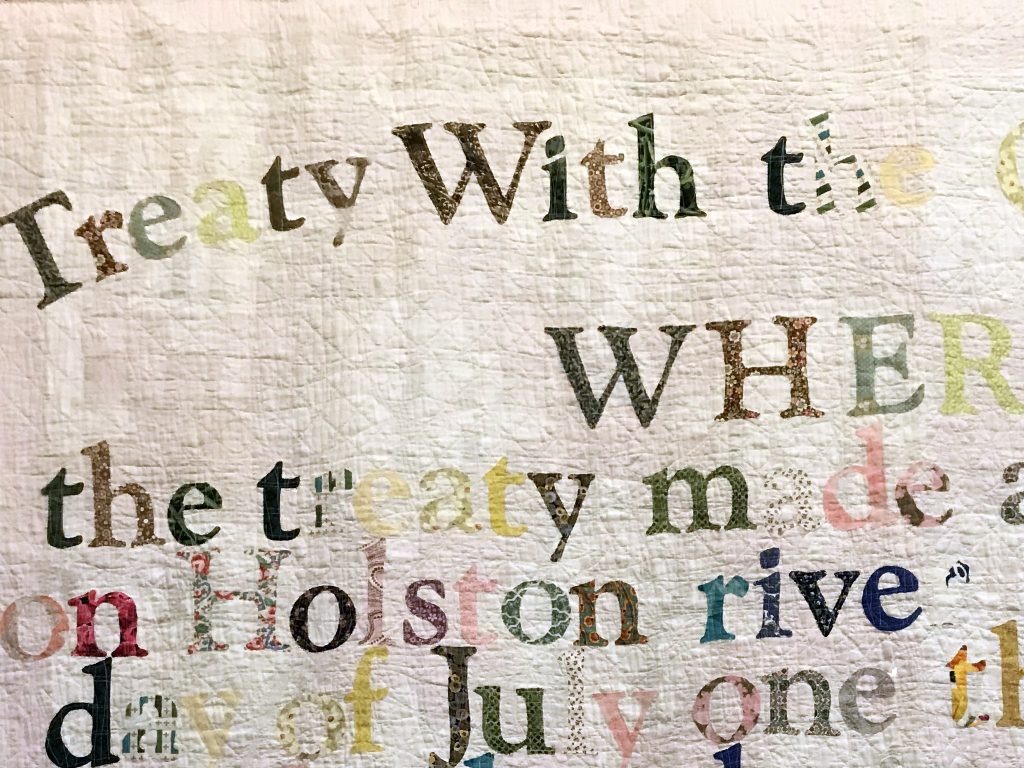
So I think that’s the core of it—I don’t mourn the loss of an antique quilt, in this case, but the opportunities left unaddressed.
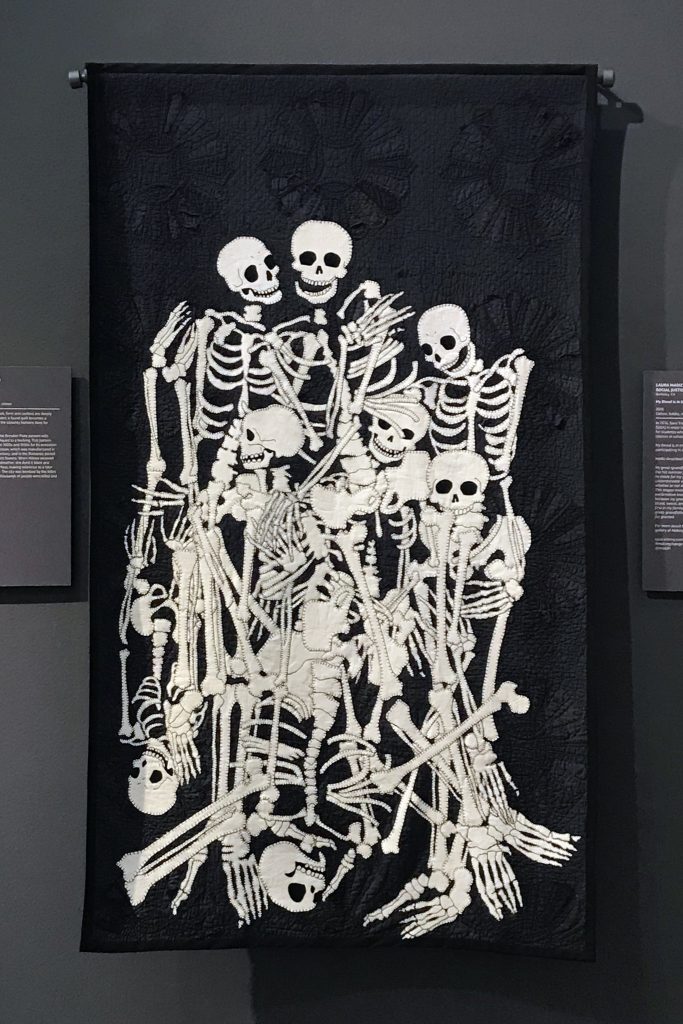
“Dresden” by Maggy Rozycki Hiltner is my favorite piece in the exhibit from a graphic standpoint. But, it’s also the one that leaves me most torn based on the execution. The artist took a gifted Dresden Plate quilt (likely circa 1920-30), overdyed it with black dye, then appliquéd skeletal figures over the top. From afar, you don’t see the textures of the underlying dresden plate blocks. It’s only once you are close that you begin to see the variations in blacks as piecing, coupled with wear and tear on the antique quilt. I wondered if the woman who gifted Hiltner with the quilt knew its eventual fate, and if not, would she have done so with that knowledge? There’s no going back from the overdying process—the quilt as it once was can never again exist.
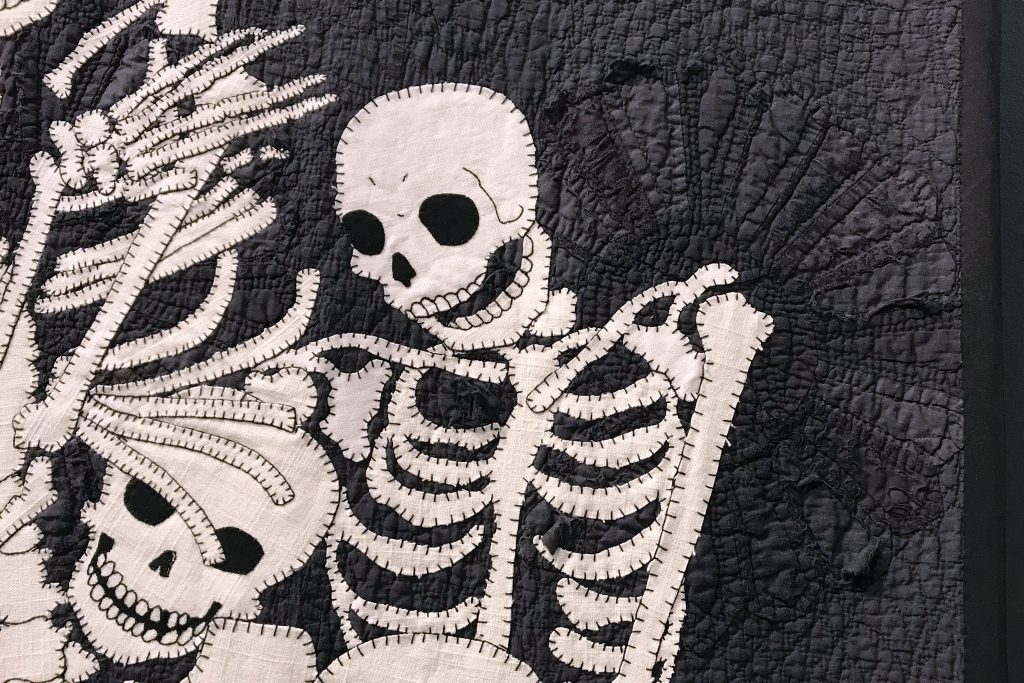
In contrast, I saw some of Kara Walker’s lithographs a few weeks ago at the High Museum of Art. Her works are also palimpsest-type pieces: reproduction lithographs from the American Civil War era coupled with cut paper silhouettes simultaneously enhancing, obscuring, and contextualizing a broader story to the original work. These works didn’t invoke the same visceral reaction as the two quilts, especially “Dresden”. Although it wasn’t 100% clear to me at the time, the lithographs are reproductions, not originals (although I made assumptions based on lack of discoloring and print quality). Perhaps it’s that paper prints are easily reproducible—even if you destroy one, there are surely other copies floating around. Perhaps it’s my lack of personal connection to the craft. Perhaps it was my subconscious making the call that the lithographs were clearly reproductions before my research verified it.
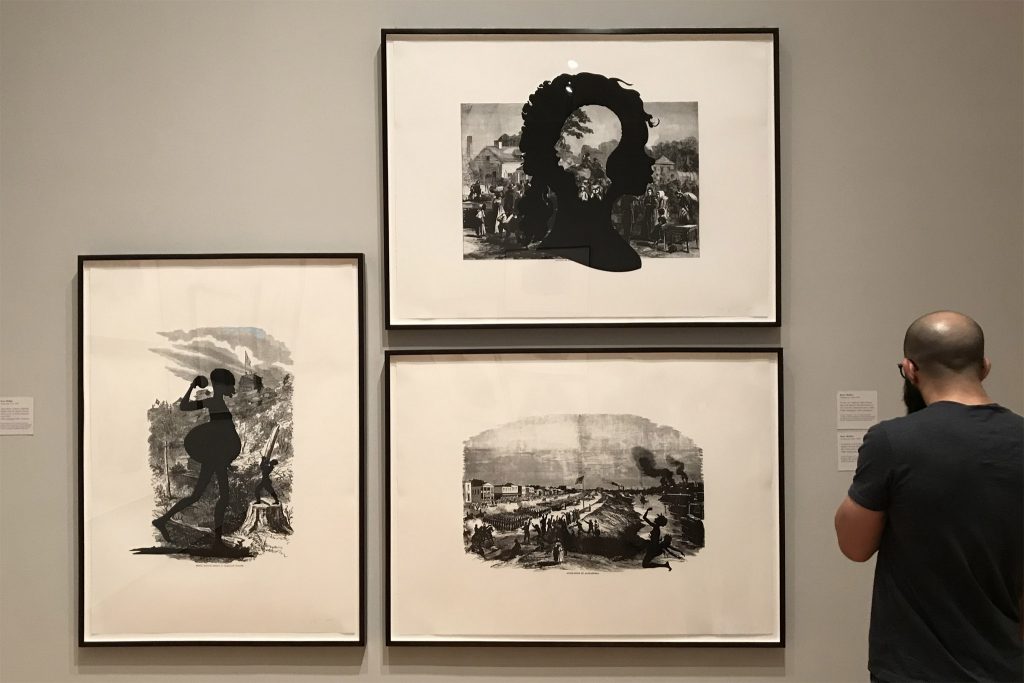
Collectors and curators can’t save every piece of art or craft. Part of collecting is making decisions on what to purge from a collection if you’ve procured a similar piece that is a better representation of the collection’s aim. In that mindset, not every antique quilt is worth saving, and given the prolific creation of both Irish Chain and Dresden Plate quilts, it’s unlikely that either of these originals was collection-worthy as is. Yet, could the same message have been achieved with a reproduction created specifically for the project, like with Walker’s lithographs?
In the end, this is why quilts are art. We ask these questions. We search for meaning. We may read more meaning into a piece than the artist intended. And to answer my own question, maybe it’s okay that both of these pieces used antique quilts. In “Treaty,” an otherwise non-special quilt is elevated in a way that neither fully obscures the original workmanship, and potentially preserves the stability of it. In “Dresden,” the dye obscures the one attribute of the quilt that might have set it apart from others—the printed fabric—but that destruction in itself echoes the destruction of countless other quilts buried by the rubble of Dresden’s bombing.
And maybe you’ll answer that question differently, or have never asked it at all.
